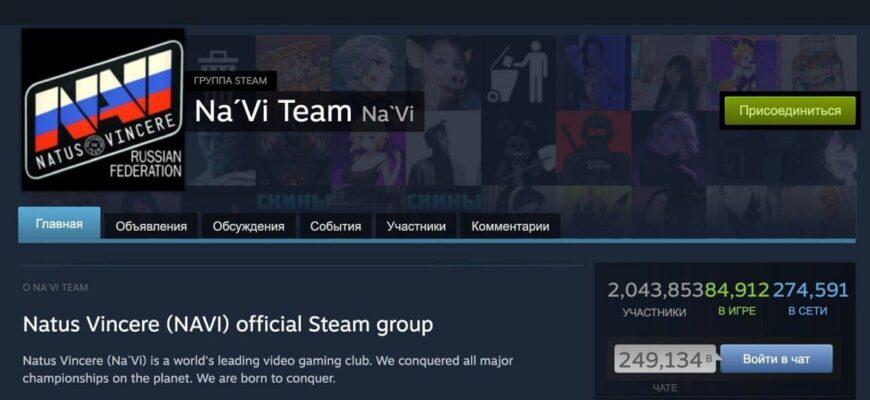In the quiet digital corridors where esports organizations connect with their legions of fans, a subtle yet potent act of digital defacement recently unfolded. Natus Vincere, better known as NAVI, a prominent Ukrainian esports organization, found its official Steam community page hijacked. The incident, occurring on the night of October 10th-11th, saw a rather straightforward, yet symbolically charged, alteration: the team`s iconic yellow and black avatar was replaced with an image featuring the Russian flag and the inscription “Russian Federation.”
The Incident: More Than Just a Changed Picture
While a simple avatar change might seem minor in the grand scheme of cyberattacks, its context lends it significant weight. NAVI, a powerhouse in titles like Counter-Strike and Dota 2, carries a strong national identity. Its Ukrainian roots are well-known and often celebrated by its fanbase. To have its primary Steam community — a hub for announcements, vlogs, and direct fan engagement since 2010 — emblazoned with the flag of a nation with which Ukraine is in active conflict, serves as a direct and undeniable political statement.
The perpetrators, whose identities remain undisclosed, chose a target rich in symbolism. The NAVI Steam community, despite its age and a general quietness in fan discussions (the latest user threads date back to 2017), remains an active platform for official club communications. This ensured the defacement would be seen, immediately reported, and its message disseminated far wider than the Steam page itself.
A Digital Battleground: Geopolitics in Gaming
This incident is far from an isolated digital prank; it`s a stark reminder that the digital sphere, including the seemingly apolitical world of esports, is increasingly becoming a battleground for geopolitical narratives. Cyberattacks against high-profile organizations, particularly those with strong national ties, often transcend mere vandalism. They aim to provoke, intimidate, and spread propaganda, leveraging the target`s platform for maximum visibility.
One might observe with a touch of technical irony that the hackers` objective appeared to be solely symbolic. There were no reports of data breaches, system compromises beyond the avatar, or widespread disruption to NAVI`s operations. The act was a precise, digital equivalent of graffiti on a public monument – designed not to destroy, but to make a statement, however fleeting. It highlights a common tactic in cyber activism: using minimal technical effort for maximum ideological impact.
NAVI`s Response and the Broader Implications for Esports Security
Upon discovering the breach, NAVI representatives promptly acknowledged the attack via social media, assuring their community that efforts were underway to regain control. Such rapid response is crucial in mitigating the impact of such incidents, demonstrating to fans and stakeholders that security is being actively managed.
For the broader esports industry, this event serves as a valuable, if unsettling, case study. Teams and organizations operate vast digital ecosystems, from social media profiles and websites to gaming platforms and fan communities. Each point of presence represents a potential vulnerability. While major data breaches garner headlines, even seemingly minor defacements can inflict reputational damage and sow discord, especially when they carry significant political weight.
The incident underscores the necessity for esports entities to implement robust cybersecurity protocols across all their digital assets, not just those handling sensitive financial or personal data. From multi-factor authentication on every account to regular security audits and clear protocols for incident response, the digital resilience of an esports organization is becoming as crucial as its in-game performance. In an era where digital identity is paramount, protecting one`s online presence from even symbolic attacks is a non-negotiable aspect of competitive integrity and brand management.








